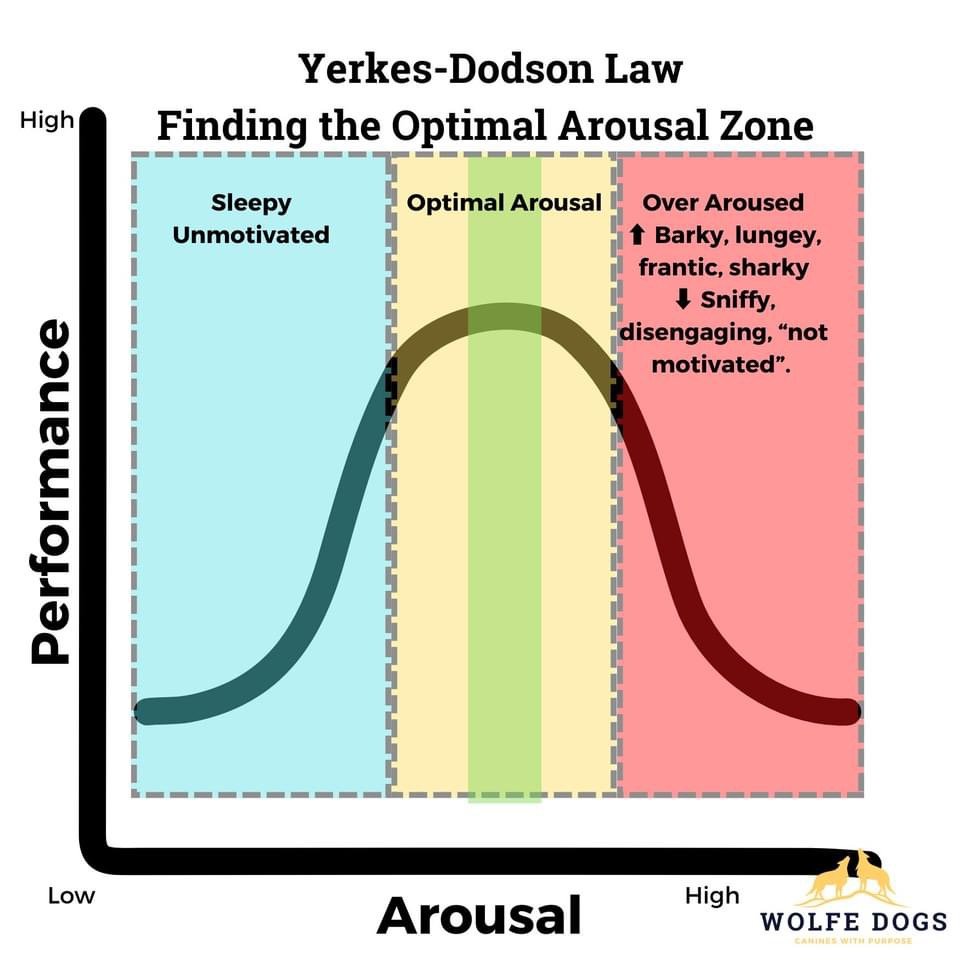High Arousal Issues
A common struggle for big feelings pet dog owners is that they’re fine training at home, but “not food or toy motivated” out and about. Often owners are left feeling like they’ve really failed with their training in cases like this, because we and our rewards have failed to be more exciting than the environment - something we’re told from day dot that we need to do.
🌟 Here’s the thing: it’s often not a lack of food drive or excitement that’s the issue in these cases, it’s too much arousal. 🌟
When a body is experiencing stress of some kind, many things (including the digestive system) are suppressed in favour of other bodily functions that are more helpful in the immediate danger zone.
What you’ll see externally is a dog that is disengaging, slow to respond to known cues, and will either not even see or acknowledge the food, or will just spit it out. On the flip side it can also look like a dog that gets tense, “sharks” for food as the arousal gets higher, taking half your hand off and swallowing it whole as an automatic response vs taking it more thoughtfully and actually learning from it.
🚀 This is an especially common issue in our working or sport type dogs, who have frequently been selected over generations for those exact big feelings and desire to do the thing at all costs. 🚀
In a lot of cases people will try to counter this issue by ADDING more value to the food (or toys) to outweigh the arousal and the environment. Making it more scarce, making it more exciting, making it more valuable. And this certainly has value in building a dog that is engaged and wants to work for us. None of us want to work for shit pay after all.
BUT if it’s an issue of over arousal suppressing the desire for the food or toy rather than simply not being hungry or motivated enough, this simple add-more approach can introduce even more arousal into a situation - pushing the dog further into the red zone. Sure, they’ll take the thing because the value is now higher, but they’re also really damn conflicted about it and it’s not moving you closer to the end goal.
We then see frantic behaviours born from anxiety instead of actually thinking things through and a dog that will go 0-100 in their reactions the moment that reinforcer is no longer immediately present. It’s not the state of mind we want for any dog, much less a pet dog we’re trying to walk down the street calmly, not even in a sport dog when we want them to be able to navigate a set of weave poles accurately or a working dog needing to get stock through a gate and not the fences. 🤯
Instead we want them to practice coming back to that optimal arousal zone where they can take the reinforcers and perform at their best most clear headed self. REDUCING arousal, as well as gradually teaching them how to cope and remain functional at higher levels of stress (because life isn’t always optimal!).
✅ Training can look like adding more structure to the dogs life so that they are practicing a lower state of arousal to start with. It could look like adding distance between us and the thing they’re getting wound up over, then gradually working closer as the dog can take it in. It can look like using movement to help the dog relax, such as walking predictable patterns or allowing them to sniff. With the help of a good trainer, it can look like a well timed correction to outright stop high arousal behaviours in the moment, allowing them to come down into more of a thinking brain. It can look like using stationing on a mat or a good old down-stay to condition a relaxation state. It can look like practicing this arousal moderating muscle ahead of time, using play (tug, flirt pole etc) to induce higher levels of excitement and teach the dog to think through it - something all dogs benefit from.
Long story short - it’s not always about us or the reinforcement itself needing to be more exciting, sometimes that’s actually going to make things worse. Often it’s more about us meeting the dog where they’re at and supporting them in coming back to a thinking brain. That’s going to look different for each dog, so if you need a hand your best bet is to reach out to a trainer for support creating a personalised approach. I might be able to help you with that.

